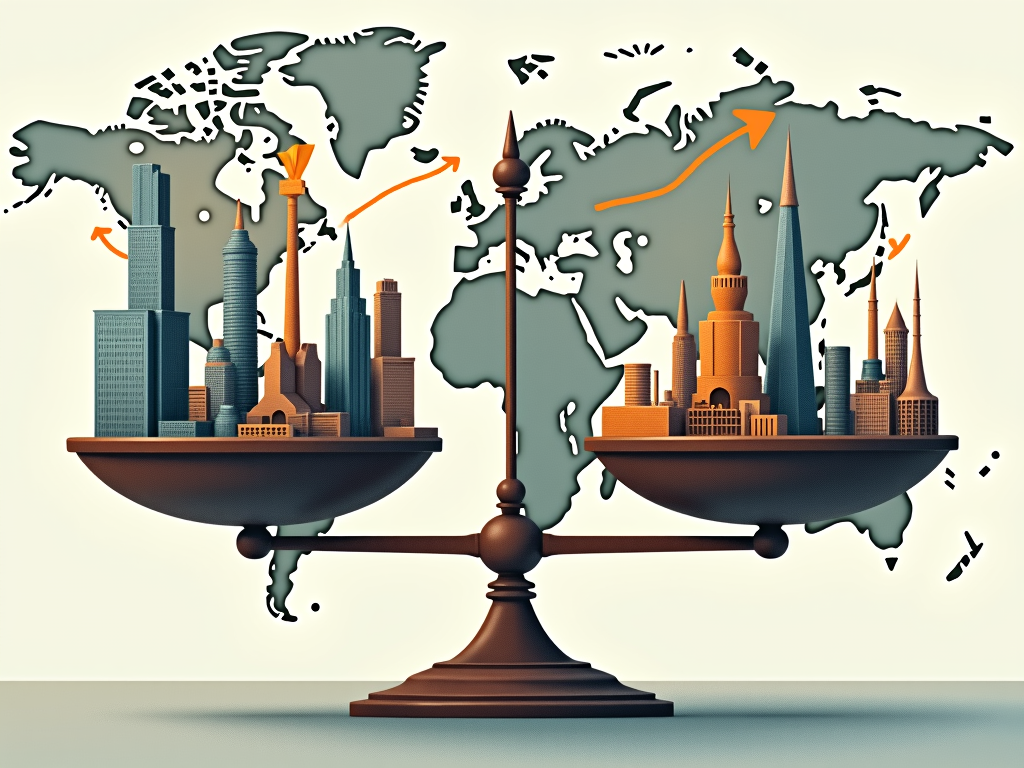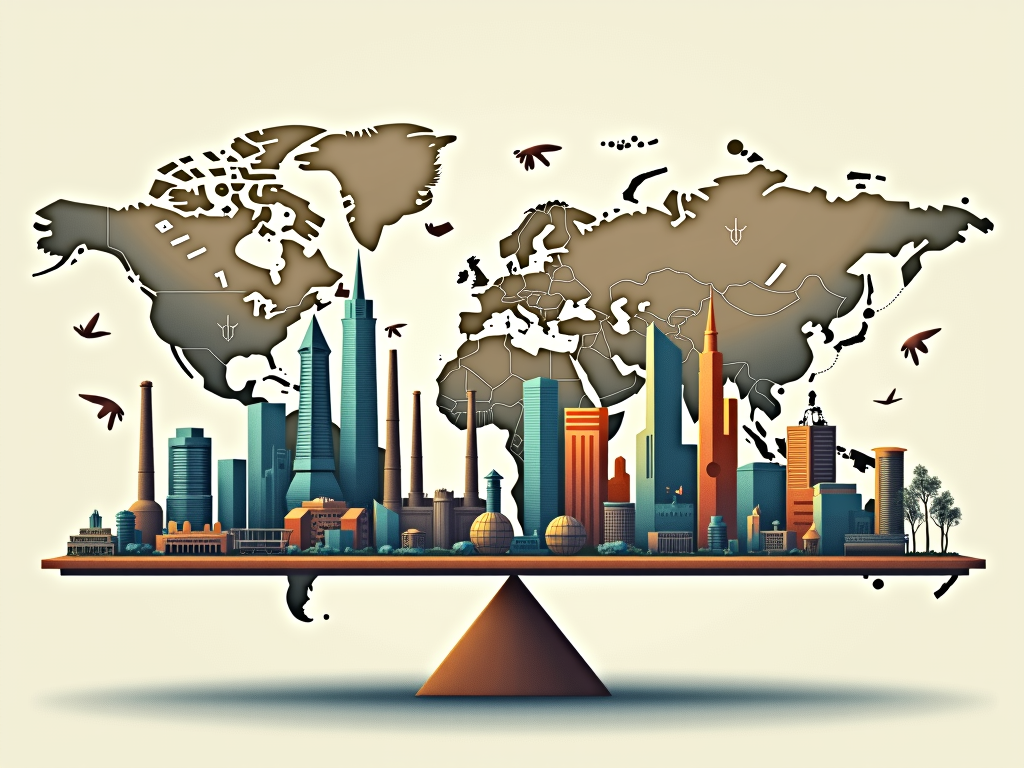In a changing global economy, investors face the choice between stability and growth. The stocks of industrialized countries offer security, while those of emerging countries attract with their high growth potential. This article explores the economic dynamics and the risk-return profiles of both options, providing investors with a basis for informed decisions.
Economic Fundamentals and Market Opportunities: Differences Between Stocks of Industrialized Countries and Stocks of Emerging Countries

In the complex arena of global financial markets, stocks of industrialized and emerging countries represent two fundamentally different investment approaches, especially when it comes to leveraging the opportunities of global economic growth. These differences are deeply rooted in their economic fundamentals, potential returns, and risks.
Economic Fundamentals
Stocks from industrialized countries come from stable and highly developed economies such as the United States, Europe, and Japan. These economies are characterized by established infrastructure and high productivity, providing a stable foundation for investments. This stability attracts investors seeking solid returns and a secure investment. Companies in these countries are often global leaders and widely diversified across various sectors, contributing to the risk assessment.
On the other hand, stocks from emerging countries offer a completely different dynamic. Countries like China, India, and Brazil are experiencing significant economic revival, driven by a huge demographic increase and rapid industrialization. These markets are often less saturated compared to their established counterparts, thus offering potentially superior growth opportunities but accompanied by greater risks. However, political instabilities and more volatile economic policies can lead to significant fluctuations.
Returns and Risks
Returns in industrialized countries are traditionally stable, albeit modest. Forecasts indicate a return range of 2.9% to 4.9% for the next ten years. In comparison, stocks of emerging countries promise higher growth rates and, consequently, higher potential returns ranging from 1.2% to 3.2%. These figures reflect the greater volatility characteristic of emerging markets. While industrialized countries are less susceptible to sudden economic shocks, emerging countries may react more wildly to geopolitical tensions and market changes.
Diversification and Market Correlation
In general, stocks in industrialized countries offer deeper diversification due to their established markets. The markets of these countries are often highly correlated, meaning they react similarly in times of crisis. Emerging countries, on the other hand, can provide a diversification advantage to investors, as their markets operate in different economic cycles and present lower correlations with industrialized countries. These characteristics make them a valuable addition to investment strategies aimed at balancing risk and growth.
By incorporating both stocks from industrialized countries and those from emerging countries into their portfolios, investors can benefit from the stability and enormous growth opportunities of the global economy. However, this requires balanced strategies that consider both short-term fluctuations and long-term trends.
Risk and Return: A Deep Comparison Between Investments from Industrialized and Emerging Countries

The choice between stocks of industrialized countries and those of emerging countries is a decision deeply rooted in risk-return analysis, a crucial element for any investor seeking global growth opportunities. Stocks from industrialized countries stand out due to their stability and offer a well-regulated market environment, minimizing risks for investors. These markets are generally more transparent and dominated by established companies capable of ensuring stable dividend payments.
However, a often criticized aspect is the low growth in industrialized countries. Since many of these markets are highly developed, growth potential is limited compared to that of emerging countries. This often leads to higher valuations for stocks, making it more expensive for investors to enter the market. Investors must accept the idea that returns here are limited by market maturity.
Conversely, stocks of emerging countries promise higher growth rates, as many of these markets are still developing. Their economy has the potential for tremendous growth due to expansion and urbanization. These stocks also present lower valuations, creating attractive entry opportunities for investors, but these opportunities come with significantly higher risks. Emerging countries are vulnerable to political instability and economic uncertainties, which can lead to increased market volatility.
To protect against these fluctuations, experts recommend a strategic diversification between these types of markets. A balanced allocation, for example through investments in MSCI World ETFs for industrialized countries and MSCI Emerging Markets ETFs for emerging countries, can help create a broad risk profile. It is important not only to regularly monitor the market but also to maintain flexibility in the investment strategy, to respond promptly to dynamic changes in the global economic landscape.
The approach to risk management has been significantly enhanced by technological support. Tools that analyze and visualize investment decisions in real-time are essential for modern portfolio management. The choice between these two markets should reflect a fundamental analysis of individual risk tolerance in addition to long-term investment goals, to create a profitable investment portfolio.